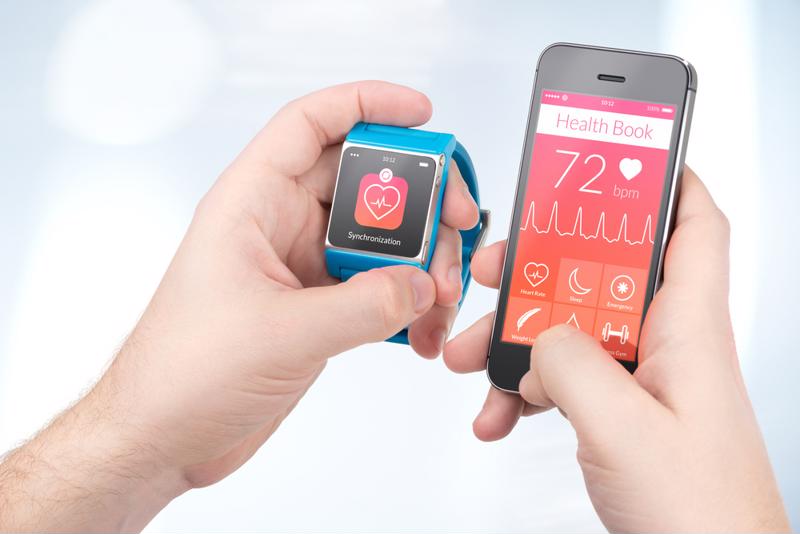

- Contributions by industrial experts with engineers in mind
- Focused on specialty-chemical material applications and selection
Knowledge Center
6 objects held together by adhesives you probably can't live without

Adhesive Applications You Can't Live Without
As you make your way through your daily routine, stop and look at everything around you. Chances are, adhesives are at work, binding together materials, creating the very products you frequently rely upon. Look at the small items present in your office or even your pockets. On your drive home, notice the many different aspects that make up your new car or smartphone.
Ordinarily, it is easy to simply pass over such ideas, but at second glance, it's true: adhesives are necessary for everyday functions, and they are essential to how we conduct our lives and go about our days. For instance, here are six objects as perfect examples:
1. Microwaves
Can you imagine where you would be without a microwave? Every home, office and restaurant has a microwave on hand for use at all times. All of your favorite meals and frozen foods would have to be cooked on a stove or oven, taking much longer and making your life more difficult. But since the inception of the microwave, you can grab food and eat on the go, simplifying your life and making the cooking process all the more manageable.
Because microwaves generate high amounts of heat, the necessary adhesives must be heat resistant and UV-cured. The glass and gasket of the microwave must be bonded to the actual frame to complete construction, which is usually done with a cyanoacrylate or silicone adhesive that provides a strong bond and dries quickly.
With these adhesives keeping your go-to appliance in top order, eating habits change in response to this convenience.
"Adhesives are vital to the performance of medical equipment present in hospitals."
2. Cars
The automotive industry is quickly catching on to the benefits of using adhesives as opposed to traditional methods of bonding, such as screws. This is because cars can be produced at lighter weights, which helps fuel economy.
Entire structures of cars can be held together with superhydrophobic polyurethane adhesives, as well as epoxies and resins. While this may not be common, you can look to the interior of your car to see a number of examples where adhesives are at work. Glove compartments, dashboards, car seats and cup holders are all typically adhered with some kind of glue.
This trend is likely to continue because advancements in technology have allowed adhesives to become stronger and more resistant to high temperatures than ever before. At a basic level, cars on the road will be glued together.
3. Shoes
Most of our fancy footwear and prized shoe designs rely on adhesives that are impact resistant. Because of the materials involved, adhesives can form strong bonds. Leathers, cottons, polyesters and other fibers all typically have rough surfaces with enough grit and surface variance that make adhesion possible.
Since adhesives work best with certain substrates, the more they have to bind to, the stronger the bond, and, in turn, the more durable the product. The first repair technique used to readhere shoes after years of use is usually a glue that is designed to handle weight and weather extremes.
In addition, cobblers have used adhesives for centuries to keep our shoes in top shape, and the shoes of tomorrow may not need stitching or nails.
4. Cellphones
As high-tech gadgets develop further and make greater use of technology to appear slimmer and more sleek, manufacturers look for ways to trim away some of the hard edges and bulky aspects of cellphones. This is accomplished by relying less on hardware and more on applicable adhesives.
Phone screens, in general, are usually LCD and are so thin that they don't jut out from the body of the phone itself. IPhones in particular utilize a glass screen that must adhere to either a metal or plastic frame. Using solvent-based silicones or adhesives that are electrically or thermally conductive is key.
 Many of the electronics we take for granted are bound together with adhesives.
Many of the electronics we take for granted are bound together with adhesives.5. Furniture
Everything from your office desk and living room couch to your coffee table in front of your TV utilizes some form of adhesive. The particularly tricky thing about these objects, however, is that many pieces of furniture are constructed with several different types of parts and materials. Woods, leathers, metals and various fabrics are used in the building process to create the furniture we use to work, eat and even sleep on every day.
This means adhesives have to be capable of working with a number of different substrates and load-bearing weights - not to mention, they must be able to sustain additional weight once the furniture is actually in use. For this task, builders typically stick with liquid or construction-related adhesives.
6. Medical devices
The adhesives market for medical devices is actually one of fastest expanding. This is because the health care industry as a whole is constantly changing due to new legislation and advances in technology, thus requiring updated medical equipment.
Assembly Magazine noted medical adhesives have an inherently higher need for success because of the nature of the processes involved. For instance, medical devices utilize light- and moisture-curing adhesives because they dry quickly and can be shaped and molded to suit the demands of a particular device, whether it be masks, tubes or even equipment that is placed inside the human body.
This puts a particular emphasis on the performance of these adhesives because one mishap could have fatal consequences. Further, the federal government has strict regulations in place regarding the safety and stability of these products.
The list could go on and on, but it's important to recognize how the items we interact with daily are configured and constructed. These applications go a long way in adding to the total spectrum of adhesive technology, helping materials become lighter and more cost-efficient. Because of this, regular consumers are able to reap the rewards of these efficient items, with faster cars, safer medical care and more user-friendly electronic devices.






